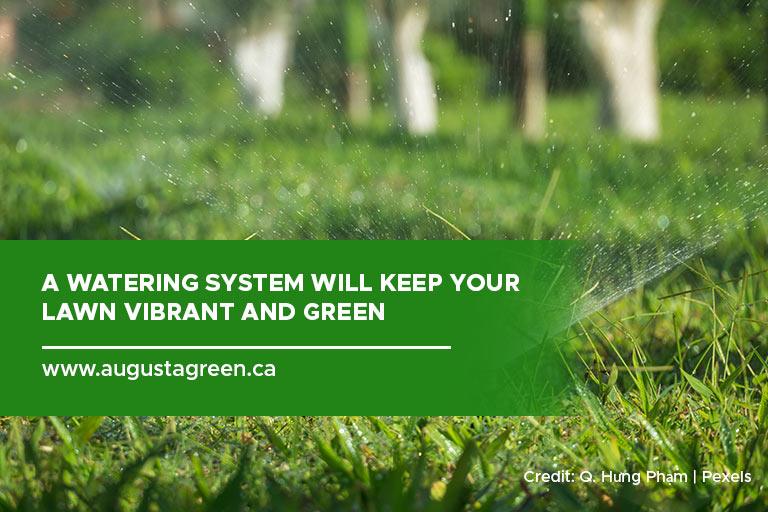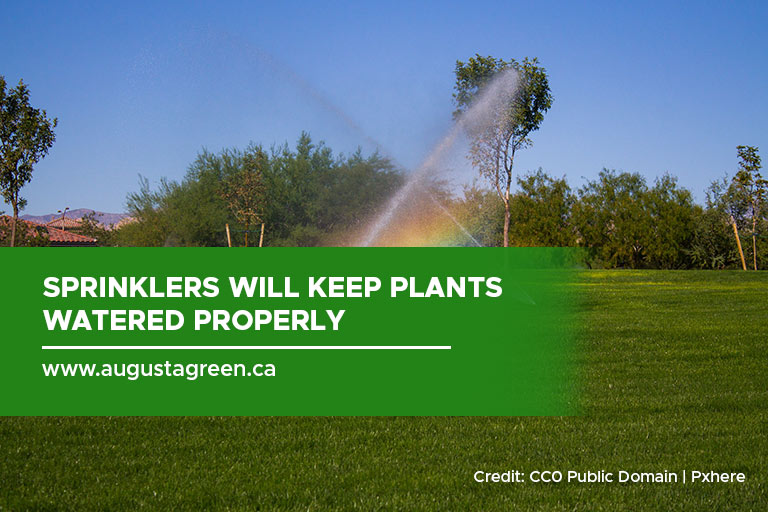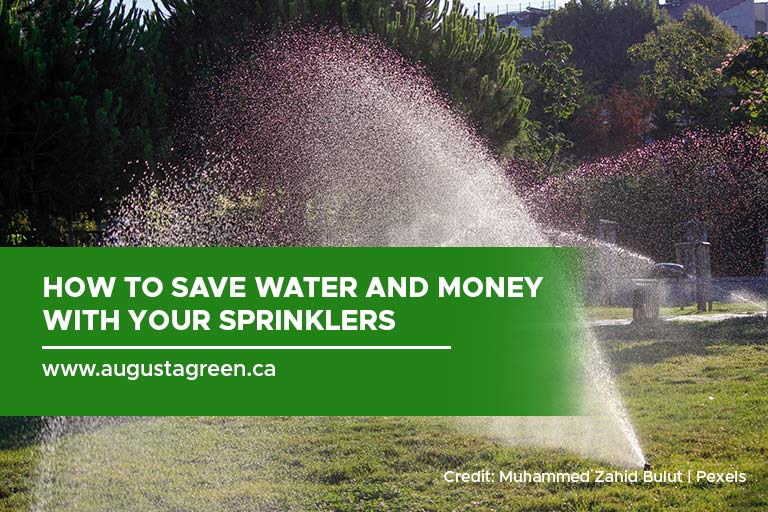Are you having a hard time keeping your lawn green and healthy? Are you wondering if there’s an efficient and effective way to keep your lawn vibrant all year round? With a new lawn sprinkler system, you can have a green landscape without the stress of maintenance. But do you know how your lawn watering habits can impact the environment?
With efficient management practices and water use, you can reduce and save water while maintaining a pleasing and nourished landscape. Here are some of the simplest steps to set up and maintain your sprinkler system and a few tips to conserve water and make the most of every drop.
Choose the Right Watering System

A carefully designed watering system helps you avoid overwatering, saving you water and money.
- Soaker Hose – Soaker hoses are a popular watering tool among gardeners. They have tiny pores that allow water to seep along the entire length of the hose. They are effective in providing deep watering for dense foliage or individual plants. You can customize your watering system by connecting a soaker hose to solid hoses to avoid wasting water in areas that don’t require it.
- Drip System – Drip irrigation is a highly efficient method of watering plants suitable for clay soils. The water is applied slowly and directly to the soil, allowing it to be absorbed and avoiding runoff. Unlike overhead spray devices, drip systems use only a fraction of the water, making them eco-friendly for your garden. With drip irrigation, you can adjust the flow rate and frequency of water delivery to ensure your landscape receives the right amount of water. You can install timers and sensors to automate your system and avoid overwatering.
- Traditional Automatic Spray System – Pop-up spray heads are one of lawns and gardens’ most common automatic watering systems. These adjustable spray heads allow you to control the coverage area, ranging from a full circle to a quarter circle. While popular, they may not always be the most efficient option because they distribute water faster than clay soil can absorb it, leading to water waste and runoff.
- Rotor System – Unlike spray heads, which apply water quickly and can lead to water waste, rotor systems release water more slowly. This allows the soil to absorb moisture more efficiently. These rotors can apply water at less than half an inch per hour and have a less than 15 feet radius, making them suitable for use in smaller lawns or gardens. The rotor system applies water slowly, allowing deep soil penetration, promoting healthier root growth and better drought resistance.
Update your watering system with a smart controller
One way to improve the efficiency of your irrigation system is to upgrade to a “smart” controller or install a rain sensor. Smart controllers have sensors that measure weather conditions and soil moisture levels. They automatically adjust watering schedules to match your landscape’s specific needs. Similarly, rain sensors reduce water waste by detecting when it is raining and automatically shutting off the sprinklers.
Regularly check for leaks
A leaky sprinkler system can go unnoticed until homeowners intentionally check for them. It’s essential to thoroughly check your system at the change of each season, or roughly four times a year. Turn off any running water in your home and check the dial on your water meter. If the dial is still turning, there could be a leak in your sprinkler system. If you identify a potential leak, address it immediately to avoid further damage and excess water usage.
Install a rain barrel
Using rainwater for watering is not only beneficial for your plants but also for the environment. These systems allow you to collect and store rainwater for later use in your landscape irrigation. Using rainwater can significantly reduce your reliance on traditional water sources, conserve water, and contribute to a more sustainable environment.
Choose drought-tolerant plants

Choose the right plants for your landscape. Make sure they suit the local climate and soil conditions. You can reduce the need for supplemental watering and promote a healthy, thriving landscape with native and drought-tolerant plants like white fir, yarrow, yucca, and sage. Consult with a local landscape professional to help you identify the best plant species for your area and property.
Mulch trees and garden beds
Mulching trees can suppress the growth of weeds, reducing the need for weeding. It also helps control soil erosion by preventing the soil from washing away during heavy weather. A layer of mulch also acts as a protective barrier between the soil and the sun, slowing down the rate at which water evaporates from the soil surface. This allows water to penetrate the soil and reach plant roots, helping to maintain healthy growth.
Water deeply, not frequently
Water should be applied slowly to allow it to soak into the ground. Water applied too quickly can lead to runoff and wasted water. Drip irrigation allows the soil to absorb the water without losing it to misting, overspray, or runoff. Allowing watering systems to run long enough to wet soils to a depth of at least 6 inches is also recommended. This encourages healthy root systems that can access water and nutrients deep within the soil.
Reduce run-off
Runoff can occur due to heavy rainfall or incorrect irrigation practices. One way to prevent runoff is by using drip irrigation or low-volume watering systems. Runoff not only wastes water but can also cause pollution in natural waterways. It is also important to water early in the morning or late in the evening when the sun is not as intense, which reduces the amount of water lost to evaporation.
Mow high
When grass is too short, the soil is exposed to direct sunlight, increasing evaporation rates. On the other hand, keeping the grass too long can result in inefficient water use, as the taller grass can absorb more water than necessary. The recommended height limit for grass is around 2 inches.
Don’t overwater
Plants have different watering requirements depending on the type of plant, soil type, and weather conditions. Find out what your plants need and adhere to those restrictions. Watering plants too frequently or too much can cause root rot, leading to plant death.
Install a reliable water sprinkler system
Don’t let water waste and high water bills become a problem for your landscape! Upgrade your irrigation system with Augusta Green Sprinklers, and start saving water and money today. Don’t wait; take action now and contact Augusta Green Sprinklers at 416-227-1666 to schedule a consultation.

